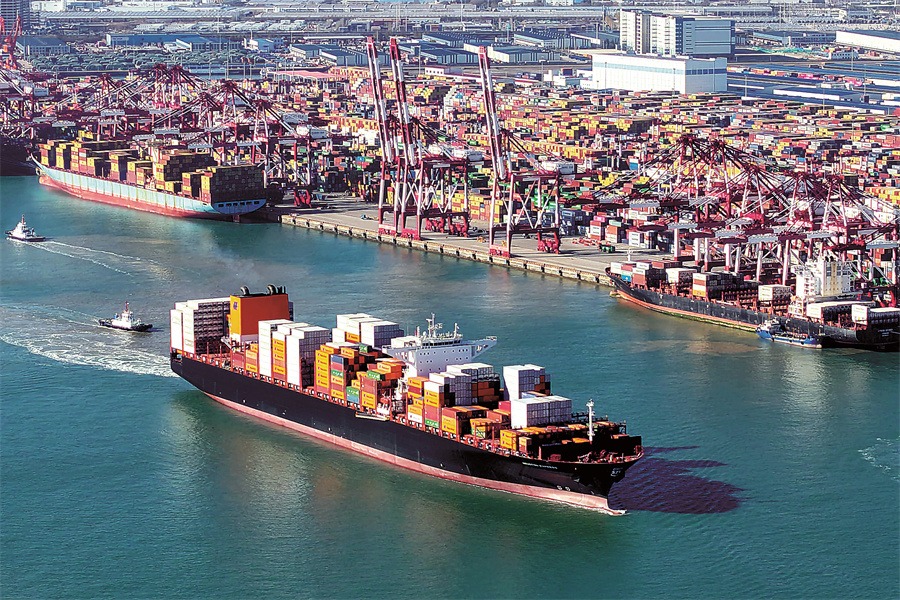Beyond GDP


European post-socialist countries have experienced diversified economic transformations over the past three decades
Just as there are days and anniversaries that are special to people, some are special to countries. Undoubtedly, Feb 6, 1989-33 years and 4 months, or one-third of a century ago-was not only important in the history of Poland but for the whole of Europe and the world. Then, sitting down at the round table, the representatives of the reformist circles of power and democratic opposition pushed the wheel of history forward. Things have been different ever since, but certainly, the reality around us is better, although not everywhere and not for everyone.
Many analyses lump almost all European post-socialist countries together, although the state of affairs at the beginning of the transformation varied. Poland and Hungary were best prepared for the transition to a new economic and political system, owing to considerable structural and institutional reforms over the previous two decades, while orthodox socialist states such as Albania and Romania were least prepared. In Asia, pro-market economic reforms were most advanced in China and Vietnam. A generation and a half later, the entire Eurasian region is more, not less, diversified.
So how much better is it now? What is the place of economies that experienced economic transformation in the world today? In answering these questions, national income, traditionally measured by the GDP, is often compared. In Poland, the per capita GDP, in purchasing power parity, in 2021 was 276 percent of the 1989 level. Here, the absolute record-holder is China, following its specific path of what I call Chinism, a hybrid system combining in an intelligent way the powers of the government and the market.
China's reforms over the last three decades have resulted in tectonic shifts, with consequences extending far beyond the post-socialist economies. While in 1989, China's GDP was about 50 percent of Russia's, now it is over 700 percent. Last year, it accounted for 18.6 percent of world output, 3 percentage points more than the United States, while Russia's share was only 3.1 percent (all indicators according to purchasing power parity).
Great changes also took place in the former Soviet Union region. While in the last year of its existence, the ratio of GDP per capita between its richest and poorest republics, Estonia and Tajikistan, did not exceed 3:1, it has now reached 10:1. In Central and Eastern Europe, in 1989, Ukraine enjoyed GDP per capita 40 percent higher than that of Poland, and in 2021, Polish income was 164 percent higher; the ratio changed from 7:5 in favor of Ukraine to 8:3 in favor of Poland. In the Czech Republic, the richest post-socialist country, GDP per capita is about 2.8 times of the poorest countries in Europe-Moldova and Albania.
There are four major causes for the diversified course of economic transformations.
Primarily, the starting conditions were better in countries that had already at least partially tried to liberalize their regulatory and governance systems. More important than privatization was the ability to build institutions that foster entrepreneurship, fair competition and block oligarchy. The quality of political leadership mattered, including courage and determination to implement difficult reforms consistently. The geopolitical situation favored the countries of Central and Eastern Europe, which took advantage of their proximity to Western Europe, adopting the principles of the European Union economy into which they integrated.
Comparisons of living standards are not easy, and yet we like to compare-Croatia to Italy, North Macedonia to Greece, Slovakia to Austria, Latvia to Finland, and Poland to Germany. What answers more comprehensively the question of how much distance separates these countries? What matters more-the income gap or the human and social capital gap? How far is Poland from the level of development already achieved by neighboring Germany? Poland's GDP per capita in 2021 reached 65 percent of Germany's ($37,786 and $58,377, respectively).However, we are now in a beyond-GDP reality and GDP is an unreliable measure that does not take into account factors that are important for living standards, such as the quality of human capital, or relations in the distribution of income. From this perspective, the Inequality-adjusted Human Development Index, IHDI, that is the human capital index adjusted for inequalities in income and access to public services, taking equal account of the level of income, the level of schools enrolment, and the healthiness of societies, was 0.813 for a Pole in 2019(the theoretical maximum is 1.00), which is as much as 93.6 percent of the IHDI of a German. When we look at the Planetary pressures-adjusted Human Development Index, PHDI, which takes into account the impact of economic activity on the natural environment, it stands at 0.752, which is 92.4 percent of the German level.
Indeed, the difference in the level of development is smaller than commonly assumed when looking at reality through the prism of current earnings. Thanks to the systemic transformation and engagement in win-win globalization, these economies are catching up with the richer countries and now the distance to them is much smaller than a third of a century ago.
The author is former deputy premier and finance minister of Poland, a professor of economics at Kozminski University in Warsaw and a distinguished professor of the Belt and Road School at Beijing Normal University. His newest book Chinism and New Pragmatism has just been published by Prunus Press USA. The author contributed this article to China Watch, a think tank powered by China Daily.
The views do not necessarily reflect those of China Daily.
Contact the editor at editor@chinawatch.cn


































